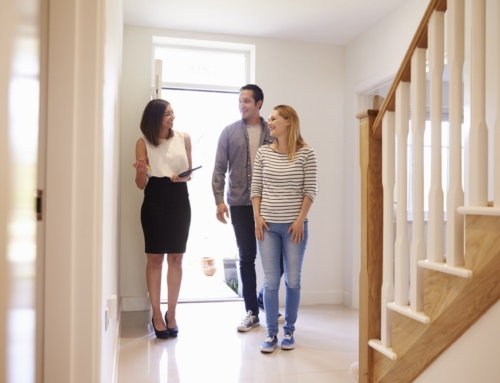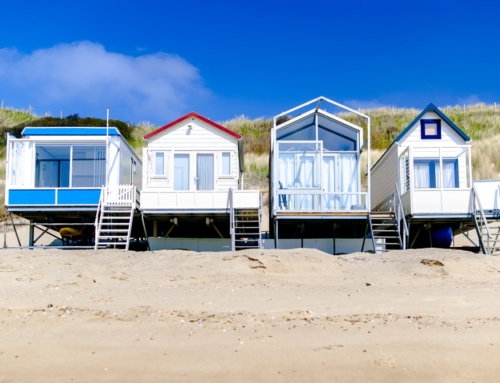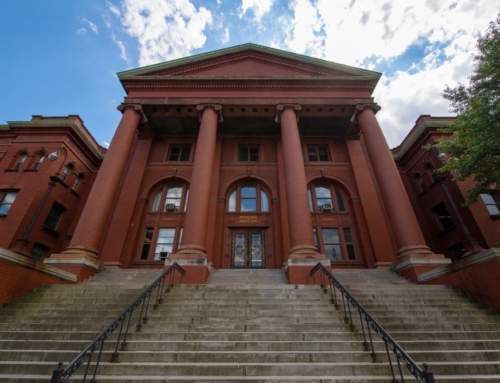Ilyce discusses design and architecture with renowned designer and author Marianne Cusato.
Video #00098
On Cam
I’m Ilyce Glink and welcome back to Expert Real Estate Tips dot Net.
Today we’re here with Marianne Cusato, she’s a designer who lives in New York although she was born in Alaska.
Track
And she’s the author of a new book called “Get Your House Right.”
On Cam
So we wanted to talk with Marianne a little bit about design and about how design and architecture are so meaningful and so combined and then of course how it has an impact on the rest of us.
So, Marianne, one of the things that you talk about in your book is making design and the design of a property, of a house authentic. What do you mean by that?
Marianne: Well the first thing is to actually look at where it’s being built and you know you can have a beautifully designed adobe house but if it were in Maine it would look ridiculous. It wouldn’t be authentic and we have a tendency of building anything anywhere.
Track
Marianne: So the first thing to do is just look at the climate of the place and actually address how the rain comes down, whether it’s a snow area, whether it’s rain, what the climate is and address that with the architectural details.
On Cam
Marianne: And very quickly you’ll have a place that’s authentic.
Ilyce: So should people live only where the style of house is authentic?
Marianne: No, well you can actually live anywhere. It’s a variation in the theme. You learn sort of what your climate is and look at how the weather there is and accommodate window sizes, eves and everything else to actually to meet those weather requirements. And what that does is it lessens the burden on mechanical systems, makes the house greener to operate, lowers your energy bills, but it also, it really makes it feel right. And you know it also sort of bringing in materials that are locally built, locally constructed will make it naturally feel right in that place as opposed to you know, bringing in tile from Spain. You know, all of these things which, they feel a little bit out of place when they’re not where they should be and that’s where the authenticity starts to feel a little bit off. And looking at the origins of architecture.
Track
Marianne: You know, not just putting things up for the sake of putting things up. Don’t gratuitously ornament a building but put things that are actually designed to be – to serve the purpose they were designed for.
On Cam
Ilyce: So let me jump in and say there should be some sort of function associated with the form.
Marianne: Exactly. So often you see these little teeny shutters
Track
Marianne: On giant windows. They could never close. They’re there – it’s not authentic. It could never work.
On Cam
Marianne: It’s not to say all shutters have to be operable. They just need to be sized so they could be operable.
Ilyce: So they could possibly give the illusion of closing down if you needed that. What if you’re buying a house that’s from a production builder and the builder has a couple of different styles of homes that the builder thinks is going to work. You want to make it more authentic. You know, a lot of modern housing doesn’t seem to feel right. Why is that?
Marianne: It doesn’t feel right because so often in an attempt to differentiate homes, builders add more so there will be a patch of this and a patch of that and it ends up looking a bit like a patchwork quilt or in some cases, literally like the materials have been wallpapered on. And the builders do that because they think every building has to be slightly different.
Track
Marianne: But really the nicest streetscapes are the ones where all of the buildings work together to make the whole greater than the sum of the parts.
On Cam
Marianne: And so not every building has to have the entire architecture of a city and communicating that message to the builder that actually less is more is something that’s crucial. You know, builders will say well, you know they want to make sure they can make sales and to do that they feel that they need to differentiate.
If a homeowner comes in and says well actually you know having wallpaper on the outside of the house isn’t something that’s appealing to us!
Ilyce: Doesn’t work for me.
Marianne: That’ll give the builder confidence to say “Wow, then I need fewer trades on site, it’s going to be easier to build” and you know you have someone to sell it to it sort of naturally is a good partnership. You know it really comes down to the industry and the market have to work together.
Ilyce: Marianne, give us maybe two or three or four tips for homeowners who are either renovating or building a new home. How do you make a property, how do you make a house look and feel authentic?
Marianne: The first and most important I would say is keep it simple. Don’t feel like you have to do everything but the things that you do do, do them really well.
Ilyce: Ok, and what else would you suggest to somebody.
Marianne: Think about all sides of the building. You know, don’t feel that every element has to be on the front. The house is more than a single elevation so do things like putting windows on the sides so you get cross ventilation. Really, take the budget all the way around because the building isn’t just a two dimensional thing. It’s a three dimensional thing.
Ilyce: It drives me crazy when you go to a new house and you see this wonderful stone face on the front and then they’ve got either brick or even siding, wood siding along the sides and the back, as if every bit of money they had just went into the face of the property. Is there any historical value in that?
Marianne: No. Builders have got a little bit off track because there’s a natural sort of evolution of how it happened. The building used to be a load bearing masonry so the stone or the brick would be on all sides. When we shifted over to a timber build where it’s a frame and there’s a veneer on front then it became easier to not carry it all the way around because you didn’t have to and watching the budget they would just put it on front. The result of that looks like wallpaper. And actually, it’s preferable to put siding on all four sides and just have an authentic building. It’s not, you know, when you have just the front that’s a masonry it’s sort of “I”m pretending to be a masonry building” is the sort of message that house sends out.
It naturally happened but I think it’s one of those places we got a little off track.
Ilyce: And any last tips?
Marianne: Have fun with it! Don’t feel that every building has to have every element, but have fun with the ones that you do do.
Ilyce: Sounds good. Marianne Cusato, she’s the author of a brand new book called “Get Your House Right.” I’m Ilyce Glink and for more design, home buying and home selling tips, visit my Web site, Expert Real Estate Tips dot Net.






Leave A Comment